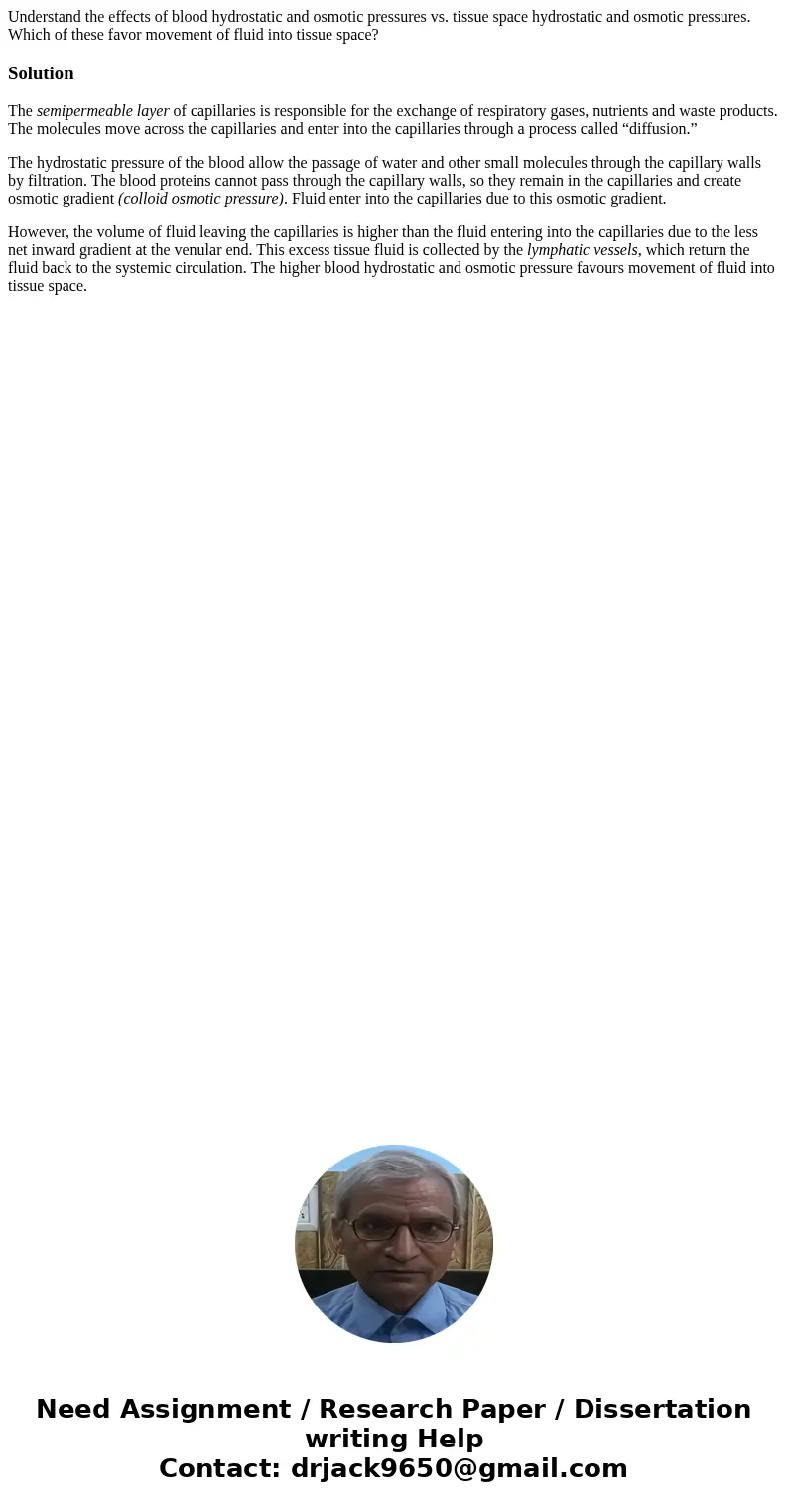Understand the effects of blood hydrostatic and osmotic pres
Understand the effects of blood hydrostatic and osmotic pressures vs. tissue space hydrostatic and osmotic pressures. Which of these favor movement of fluid into tissue space?
Solution
The semipermeable layer of capillaries is responsible for the exchange of respiratory gases, nutrients and waste products. The molecules move across the capillaries and enter into the capillaries through a process called “diffusion.”
The hydrostatic pressure of the blood allow the passage of water and other small molecules through the capillary walls by filtration. The blood proteins cannot pass through the capillary walls, so they remain in the capillaries and create osmotic gradient (colloid osmotic pressure). Fluid enter into the capillaries due to this osmotic gradient.
However, the volume of fluid leaving the capillaries is higher than the fluid entering into the capillaries due to the less net inward gradient at the venular end. This excess tissue fluid is collected by the lymphatic vessels, which return the fluid back to the systemic circulation. The higher blood hydrostatic and osmotic pressure favours movement of fluid into tissue space.

 Homework Sourse
Homework Sourse